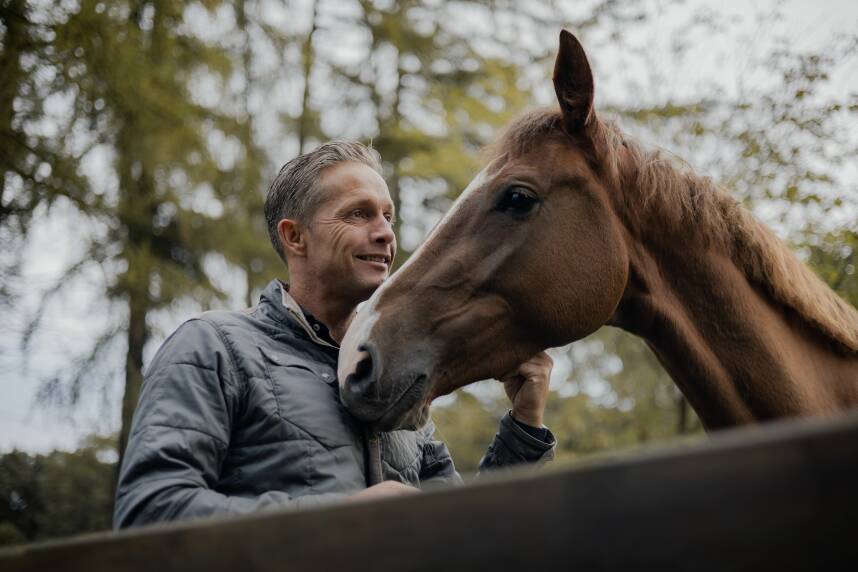DID YOU KNOW?
That when you write things down, it becomes easier to connect with yourself? It has a calming effect, enhances creativity, and stimulates various brain areas.
DID YOU KNOW?
Thoughts occur both consciously and unconsciously, but the majority are unconscious.
DID YOU KNOW?
Humans have about 60,000 thoughts daily.
Bianca Bagge
Danish eventing rider
"I have greatly benefited from the videos and used them extensively for self-training and strengthening my mental mindset. Over the weekend, I rode in the Danish Championships. As the only rider with a clear round in the show jumping, I secured such a significant lead over the rest of my competitors that I could secure the victory even with some time penalties in the cross-country yesterday!"
Daniel Bachmann
Danish dressage rider
"I have gained a completely different understanding of how much mental surplus plays a role in my performance. My collaboration with Rasmus has truly improved me as a rider as well as person. In the most challenging and high-pressure situations, Rasmus has been a huge help and support – sometimes in unexpected ways."
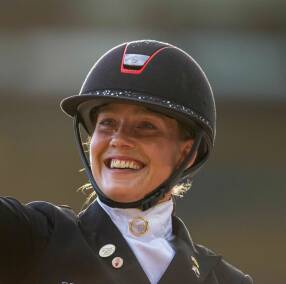
"My collaboration with Rasmus is just as important to me as practising canter pirouettes, piaffe, or parades. Mental training is a significant part of all my performances – it's precisely what allows me to not only 'win the warm-up', but to bring details, nuances, and surplus onto the field. Everyone should do themselves the favour of not only training on the horse, but also remember to train the mental aspect during the remaining 23 hours we have in the day."
Cathrine Laudrup-Dufour
Danish dressage rider

"I have been working with Rasmus for many years, and he is a huge part of my success so far. The tools he can provide to help manage 'stressful' situations allow you to focus on the right thoughts. I am thrilled with our collaboration and recommend it to all athletes."
Rikke Belinda Barker
International show jumper
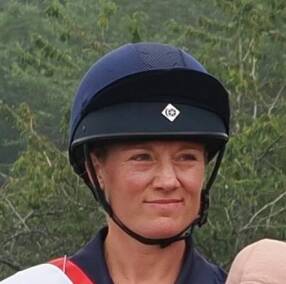
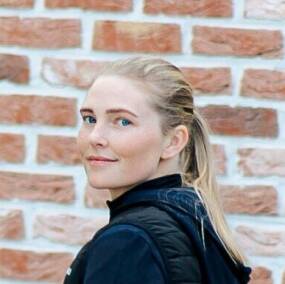
Rasmus Bagger's best advice for mental training:
“Learn to control your mood. When you can manage your mood, you can manage everything.”
Follow Rasmus Bagger on Instagram
EXERCISE:
How to keep a training diary according to Rasmus Bagger
1.
Write down which horse you rode, what you trained, what worked out well, and what did not work out. Most importantly, note your mood. If you cannot put your training into words, rate your training on a scale of 1-10.
2.
Use the training diary actively. You can review it in the morning and evening before going to the stable or when you need a reminder of how your training is going and what you are working on.
3.
Even if you ae not a competitive rider, a training diary can help ensure your self-awareness and improve the quality of your training. With a training diary, you must constantly assess how your training is progressing and, most importantly, how your mental state affects the training.
ABOUT RASMUS BAGGER
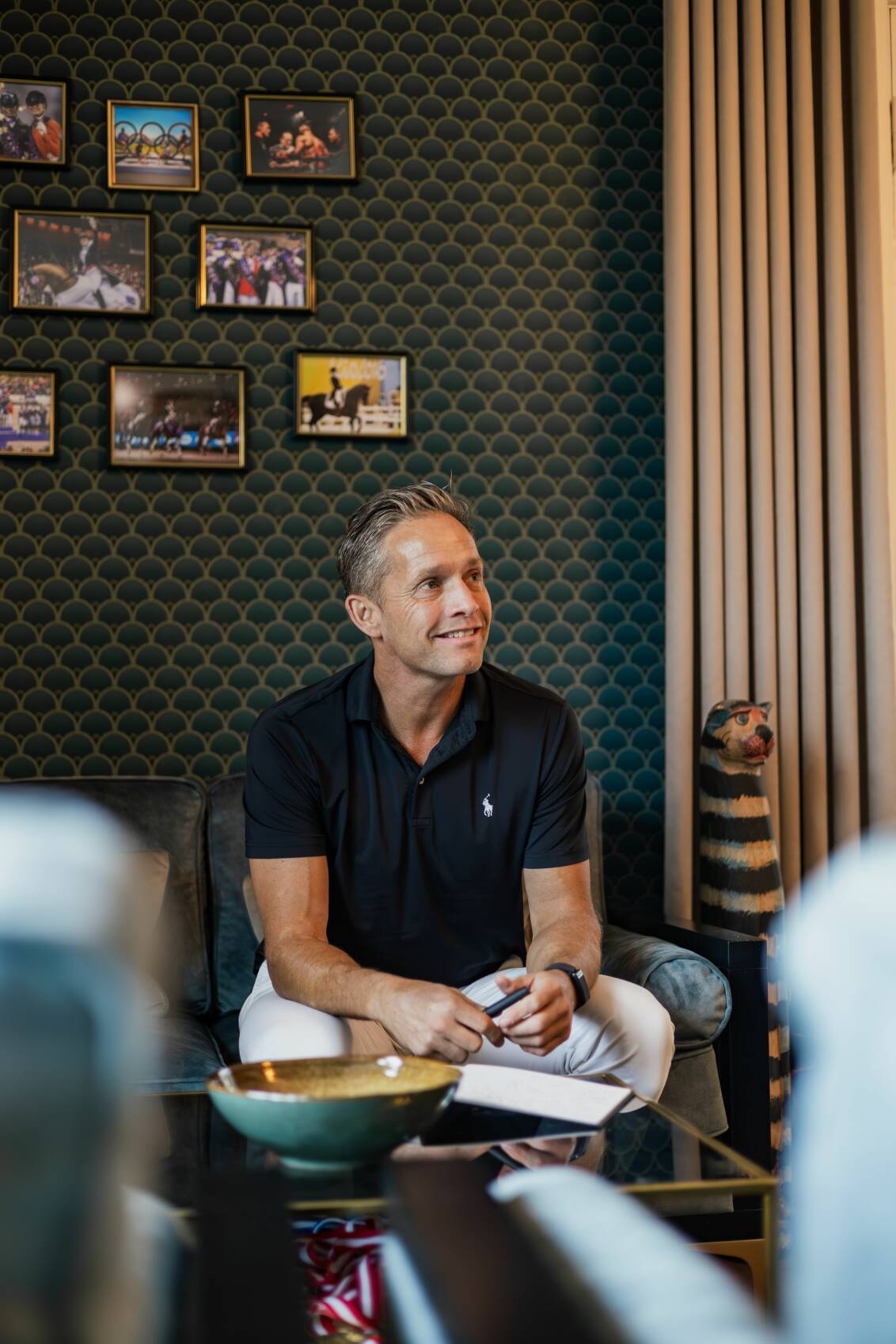
Rasmus Bagger is a former professional athlete, but today, he makes a living as a lecturer and mental trainer, mentoring both corporate leaders and professional athletes – including Cathrine Laudrup-Dufour, Daniel Bachmann Andersen, Nanna Skodborg Merrald, and show jumper Rikke Belinda Barker. He has also coached Grand Prix rider Charlotte Jorst from the USA and Swedish show jumper Rolf-Göran Bengtsson. His mental training is based on the importance of knowing and mastering our inner universe – both for our sake and the horse's sake- so that we can achieve success together.
"For my slightly more ambitious riders, I might say that when they started riding, they signed a contract with the horse gods that they couldn't be normal anymore. They had to become smarter than usual – and if not for their own sake, then for the horse's sake." Unlike many other sports, we are responsible for an animal.
"Our task is to ensure that the horse has a good experience. It's not the horse's job to ensure that we have a good experience. All interaction with horses is about self-awareness and self-insight," says Rasmus Bagger, who also coaches in many other sports.
"The more self-awareness we have, and the more we understand ourselves, the better decisions we can make under pressure. It can be the pressure we experience when the horse jumps to the side and gets frightened. The horse instinctively panics and flees, and as riders, our task is either to anticipate that situation or remain the calm leader who keeps an overview and can calm our horses – rather than resorting to our flight instincts and going along with the horse's reaction. If you know a pattern, changing it will be much easier," explains Rasmus Bagger.
There is no doubt that riding requires an awareness of our feelings and reactions beyond the ordinary. Mainly because we are dealing with a living being where we cannot just use words to express what is bothering us. But consciousness does not only happen when we are in the stable. It occurs around the clock, where we constantly need to prepare for how we can make the most of our hours in the stable.

"It's normal to be in a bad mood, but we need to understand that it's not useful at all when working with horses."
Mental training around the clock
It is important to emphasize that mental training occurs around the clock. It is not just the hours you spend in the stable.
"The exercise is telling myself I'll try to do something differently. There must be thinking and practicing repeatedly so that – through the conscious mind – it becomes ingrained in the subconscious mind as a new memory and, hopefully, a better automatic action."
When we need to make changes, there is a simple trick, according to Rasmus Bagger: "We don't start the new habit on Monday. We start it today and work on making it succeed daily. In the stable and the rest of our daily lives." It requires us, as riders, to become aware of what motivates us. What drives us?
"To have an ambition, we need constant motivation. Something that drives us to get better – and if we can add passion for what we do, we have an ideal combination of motivation and passion. Therefore, as riders, we must consider what brings us joy in riding," explains Rasmus Bagger.
In this way, we as riders ensure that we always have the goal in mind and know how to achieve that goal. Thus, consciousness is crucial when dealing with horses. We must be aware of our mental state when we arrive at the stable. Emotional intelligence requires us to take action over all those unconscious thoughts and try to make a fraction of them conscious.
"The horse shouldn't become our psychologist. It's fine that we experience being de-stressed after being in the stable – it's just not certain that the horse has the same perception if you've walked around in the stable for the first half-hour stressed and thinking about work or something at home."
By that time, the horse had registered the unrest. It has been noticed that this person cannot be present and take control of the situation and set the needed boundaries for the interaction – both on the ground and in the saddle. Rasmus Bagger emphasizes here that it is entirely normal. Usually, we contain many different emotions – both the beneficial and the undesirable – but we need to learn to become aware of them.
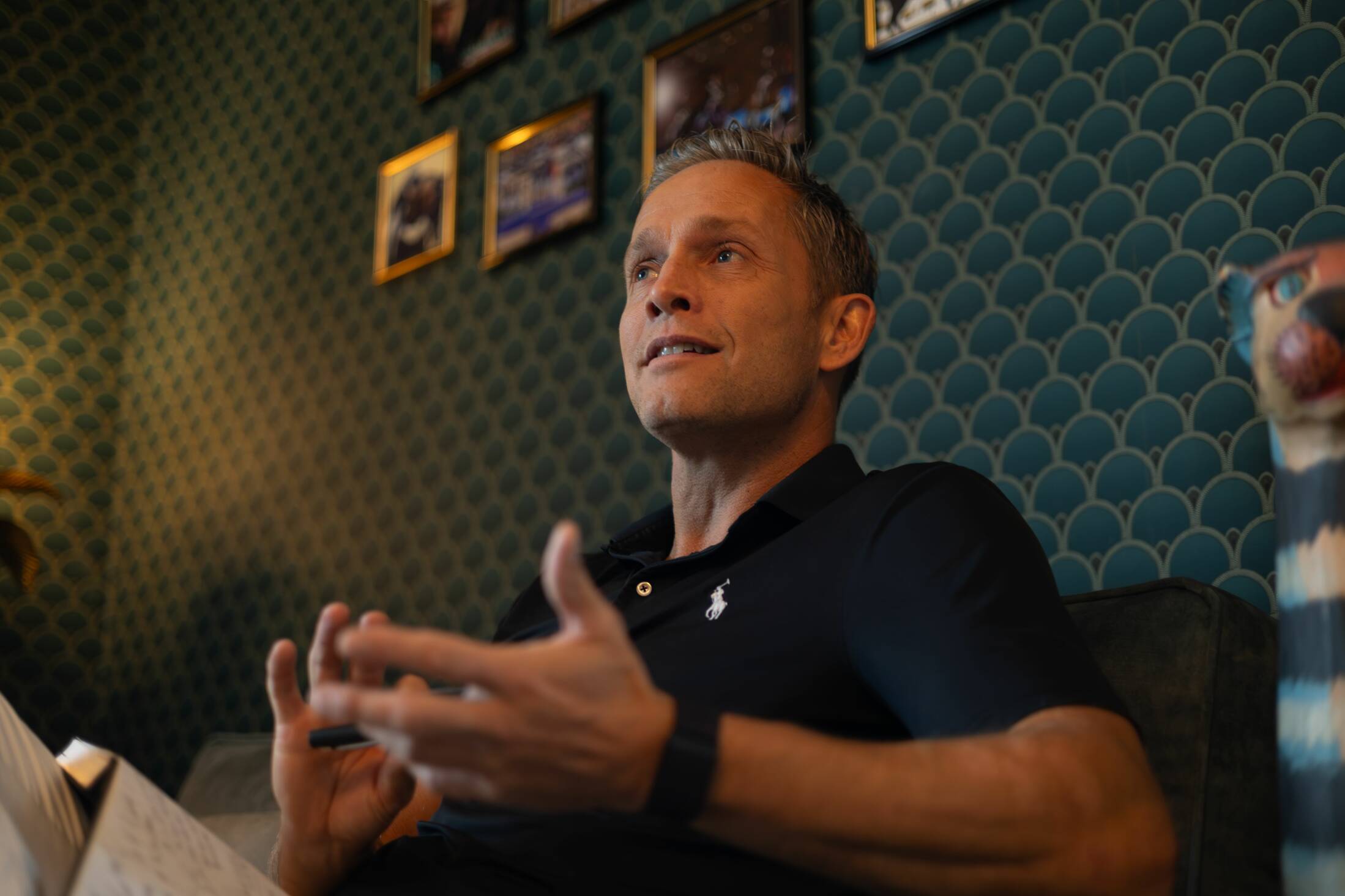
Calm riders create calm horses
Most equestrians will probably recognize the situation where the horse becomes restless or uneasy – but how we handle it as riders can change the entire situation. However, it requires us to consider our own mental state of mind.
"The rider needs to feel the security themselves. The rider needs to feel calm, self-confidence, courage, power, surplus, overview, and joy – this surplus mentality. When the horse becomes uneasy, we must be able to maintain that mentality and help it best out of its instinctual reaction as a flight animal," explains Rasmus Bagger.
But it requires an immense mental surplus and does not happen alone. It requires us to work diligently on ourselves – not only when in the stable. Rasmus Bagger explains how riding is one of the sports that places the highest demands on mental training. "It's the most important sport to be emotionally intelligent in."
Even though a lack of mental surplus can affect performance in other sports, for example, on the golf course, the golf ball is not affected by you hitting it into the ground. It might get a few scratches, but the horse, on the other hand, will instinctively panic if it senses you are getting angry or frustrated. That's not to say that, as riders, we should never experience or feel these emotions – we just need to be aware of them and try to work with them.
"Simply put, we can divide the brain into consciousness and subconsciousness. When you engage with something, it happens in your consciousness. It creates reflection and analysis. On the other hand, subconsciousness is the most powerful part of the brain that is never turned off. We have about 60,000 thoughts daily, and somewhere between 85-98 per cent of them are unconscious. This means that for some people, as little as 2% of their thoughts are conscious. We don't know what's going on the rest of the time. It's running on autopilot," explains Rasmus Bagger.
The human brain is a complex entity, but if we understand more about how it functions, it might become easier to understand why it is so difficult to change established patterns. "The subconscious part of the brain remembers and registers everything. This also means that EVERYTHING can affect our riding – and the subconscious can only offer solutions from the past. Consciousness, on the other hand, can evaluate, reflect, and prepare," explains Rasmus Bagger and continues:
"When we can't do anything other than what the subconscious offers, it's because we're not maintaining focus and being aware of doing something different. Stop, breathe, and reflect on a better solution than the automatic reaction."
Resisting automatic reactions is normal when the horse does not act how we want it to. Perhaps you have experienced that your horse reacts and becomes fearful or stressed about the same thing each time – and your reaction is the same every time. But if the result of the automatic reaction does not yield the desired response, it might be time to stop and try something different. Here, mental training and awareness can be the way forward. Hence, as a rider, you allow yourself to explore another solution than the one that your brain automatically offers you. By reflecting on your training, you may find a different and better resolution.
"What you train your body for, it becomes good at – and that also applies to mental training."
24 hour ROUTINE

IN THE EVENING
In many ways, morning and evening are similar. Spend some time every evening writing down and reflecting on your day or time with the horse in your training diary.
Write down three things you were happy or grateful for.
It can be anything from a successful exercise to a situation where you managed to change your reaction consciously.
IN THE MORNING
Write down your ambitions for your riding. What kind of rider do you want to be?
Define clear goals and what it takes to achieve them.
Keep it focused on positive and resourceful associations.
Read your goals and dreams every morning and update them regularly.
Read them, do it, and practice it every day.


DURING THE DAY
Ensure that you look forward to going to the stable. In other words, associate it with positive feelings to be with your horse.
Focus on what you are doing. Even though you get to think about things in the stable during the day, it is not the time for that when you, for instance, are at work or doing something else. It creates a negative feeling in your body at work if you constantly think about what you must deal with in the stable – and vice versa.
Give yourself 5-10 minutes where it is okay for your thoughts to be directed towards the stable and what you have to do there – but then let it go so you can continue your work and what else requires your focus.
The exercise is simple: Be present in what you do, in this case, at your job.
AT THE STABLE
When you are on your way to the stable, you can use the travel time to shake off stress, bad moods, or other
non-resourceful emotions.
Take deep breaths and try to shift your focus to what is next.
Think about the things you can look forward to at the stable.
"Change your expectations for appreciation" – when you consciously look for things to appreciate, things around you change, and do not hold onto expectations that are not met. Shift your focus to what actually succeeds.
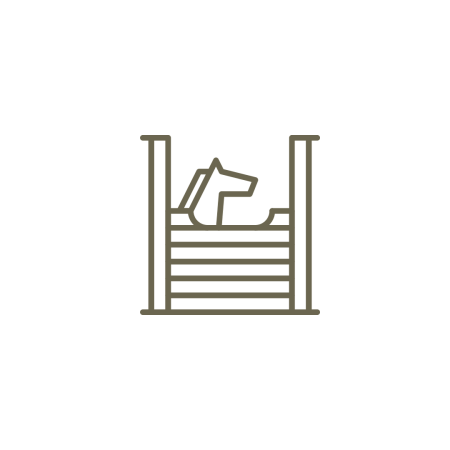
Joy, calm, overview, relaxation
Resourceful feelings:

Stress, pressure, fear, anger, helplessness, anxiety
Non-resourceful feelings:

"Good mood equals good riding. Bad mood equals bad riding."
According to mental trainer Rasmus Bagger, that is how simple it can be when he is asked how our mental state and mood impact our horses. "It's normal to be in a bad mood, but we need to understand that it's not useful at all when working with horses," explains Rasmus Bagger.
Our horses will notice it when we enter the stable stressed, angry, or similar emotions – and, of course, they also notice the opposite. Those are the tools the horse has to work with. It senses moods, registers body language, and responds immediately to what it detects.
It requires us to become aware of what we think and feel – and what we bring into the stable and when we mount in the saddle. "Every time we emit these anxious, worried, stressed feelings, we show the horse that it can't trust us."
"That's why, as riders, we also need to take our own mental well-being seriously," says Rasmus Bagger. Labelling feelings as negative or positive is inaccurate, but Rasmus Bagger categorizes our emotions as resourceful and non-resourceful rather than negative and positive.
"When we have non-resourceful feelings, we tell the horse we're unreliable. Therefore, the horse will try to take control and do undesirable things, even though we've asked the horse to do them because we haven't taken control of our emotions and we send inappropriate signals to our horses," explains Rasmus Bagger. Our horses are herd animals – but also flight animals. It means they depend deeply on being able to trust us as riders. We take responsibility and show the horse it can trust us – and they can only do that if we are balanced and present – so we can establish a safe partnership.
It simply does not work if we start thinking about a conflict at home or work while expecting top results in the saddle – and this applies whether you are a competitive rider, trail rider, do groundwork, or something entirely different. Presence is the key to all horse training, explains Rasmus Bagger.
But how do we train that presence? Get Rasmus Bagger's best tips for training your presence – around the clock – in this article.
By Cæcilie Kallehave Jensen Photos: Malgré Tout // Trine Bjørn Puggaard
As riders, horses occupy a significant portion of our daily lives. There is a lot of planning, coordination, and dealing with joys and concerns. But how do we care for ourselves as horse owners, and how does our mental well-being affect the horse? We have discussed this with Rasmus Bagger.
How to ensure your mental well-being
with Horses:
Hours



DID YOU KNOW?
That when you write things down, it becomes easier to connect with yourself? It has a calming effect, enhances creativity, and stimulates various brain areas.

"I have greatly benefited from the videos and used them extensively for self-training and strengthening my mental mindset. Over the weekend, I rode in the Danish Championships. As the only rider with a clear round in the show jumping, I secured such a significant lead over the rest of my competitors that I could secure the victory even with some time penalties in the cross-country yesterday!"
Bianca Bagge
Danish eventing rider

"I have gained a completely different understanding of how much mental surplus plays a role in my performance. My collaboration with Rasmus has truly improved me as a rider as well as person. In the most challenging and high-pressure situations, Rasmus has been a huge help and support – sometimes in unexpected ways."
Daniel Bachmann
Danish dressage rider
"My collaboration with Rasmus is just as important to me as practising canter pirouettes, piaffe, or parades. Mental training is a significant part of all my performances – it's precisely what allows me to not only 'win the warm-up', but to bring details, nuances, and surplus onto the field. Everyone should do themselves the favour of not only training on the horse, but also remember to train the mental aspect during the remaining 23 hours we have in the day."
Cathrine Laudrup-Dufour
Danish dressage rider

Follow Rasmus Bagger on Instagram
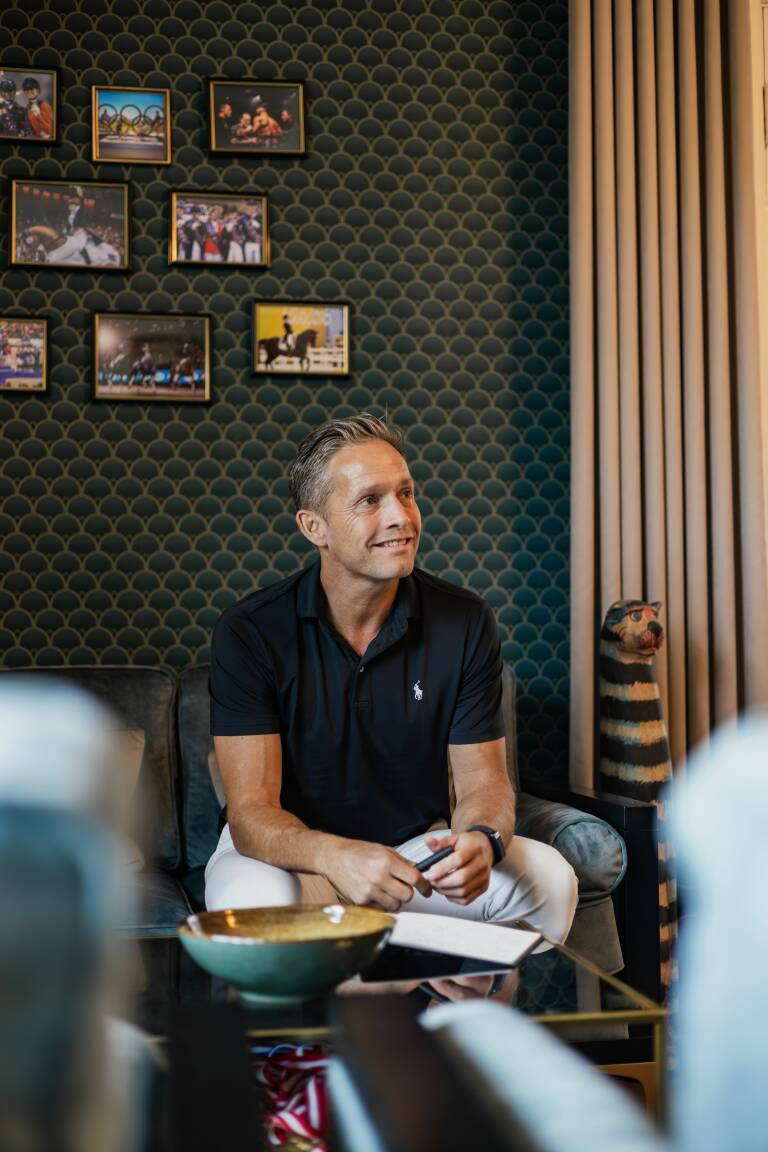
ABOUT RASMUS BAGGER
Rasmus Bagger is a former professional athlete, but today, he makes a living as a lecturer and mental trainer, mentoring both corporate leaders and professional athletes – including Cathrine Laudrup-Dufour, Daniel Bachmann Andersen, Nanna Skodborg Merrald, and show jumper Rikke Belinda Barker. He has also coached Grand Prix rider Charlotte Jorst from the USA and Swedish show jumper Rolf-Göran Bengtsson. His mental training is based on the importance of knowing and mastering our inner universe – both for our sake and the horse's sake- so that we can achieve success together.
"For my slightly more ambitious riders, I might say that when they started riding, they signed a contract with the horse gods that they couldn't be normal anymore. They had to become smarter than usual – and if not for their own sake, then for the horse's sake." Unlike many other sports, we are responsible for an animal.
"Our task is to ensure that the horse has a good experience. It's not the horse's job to ensure that we have a good experience. All interaction with horses is about self-awareness and self-insight," says Rasmus Bagger, who also coaches in many other sports.
"The more self-awareness we have, and the more we understand ourselves, the better decisions we can make under pressure. It can be the pressure we experience when the horse jumps to the side and gets frightened. The horse instinctively panics and flees, and as riders, our task is either to anticipate that situation or remain the calm leader who keeps an overview and can calm our horses – rather than resorting to our flight instincts and going along with the horse's reaction. If you know a pattern, changing it will be much easier," explains Rasmus Bagger.
There is no doubt that riding requires an awareness of our feelings and reactions beyond the ordinary. Mainly because we are dealing with a living being where we cannot just use words to express what is bothering us. But consciousness does not only happen when we are in the stable. It occurs around the clock, where we constantly need to prepare for how we can make the most of our hours in the stable.
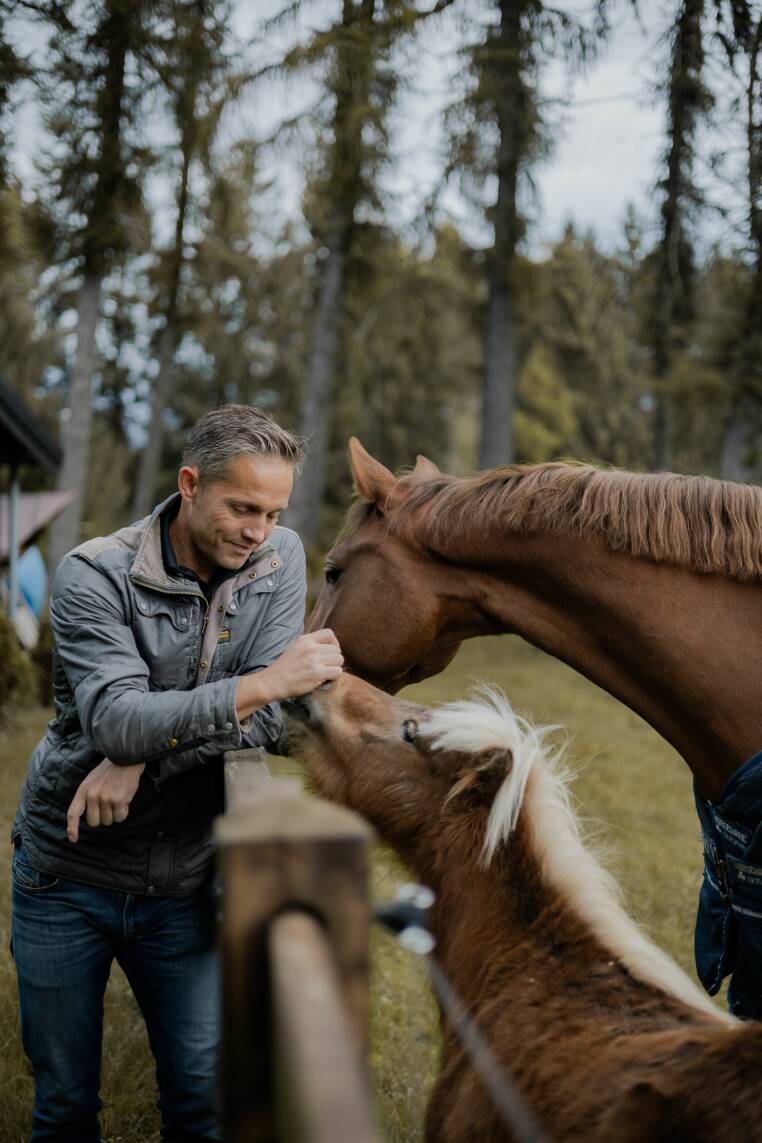
1.
Write down which horse you rode, what you trained, what worked out well, and what did not work out. Most importantly, note your mood. If you cannot put your training into words, rate your training on a scale of 1-10.
2.
Use the training diary actively. You can review it in the morning and evening before going to the stable or when you need a reminder of how your training is going and what you are working on.
3.
Even if you ae not a competitive rider, a training diary can help ensure your self-awareness and improve the quality of your training. With a training diary, you must constantly assess how your training is progressing and, most importantly, how your mental state affects the training.
EXERCISE:
How to keep a training diary according to Rasmus Bagger
DID YOU KNOW?
Thoughts occur both consciously and unconsciously, but the majority are unconscious.
Rasmus Bagger's best advice for mental training:
“Learn to control your mood. When you can manage your mood, you can manage everything.”
"It's normal to be in a bad mood, but we need to understand that it's not useful at all when working with horses."
DID YOU KNOW?
Humans have about 60,000 thoughts daily.
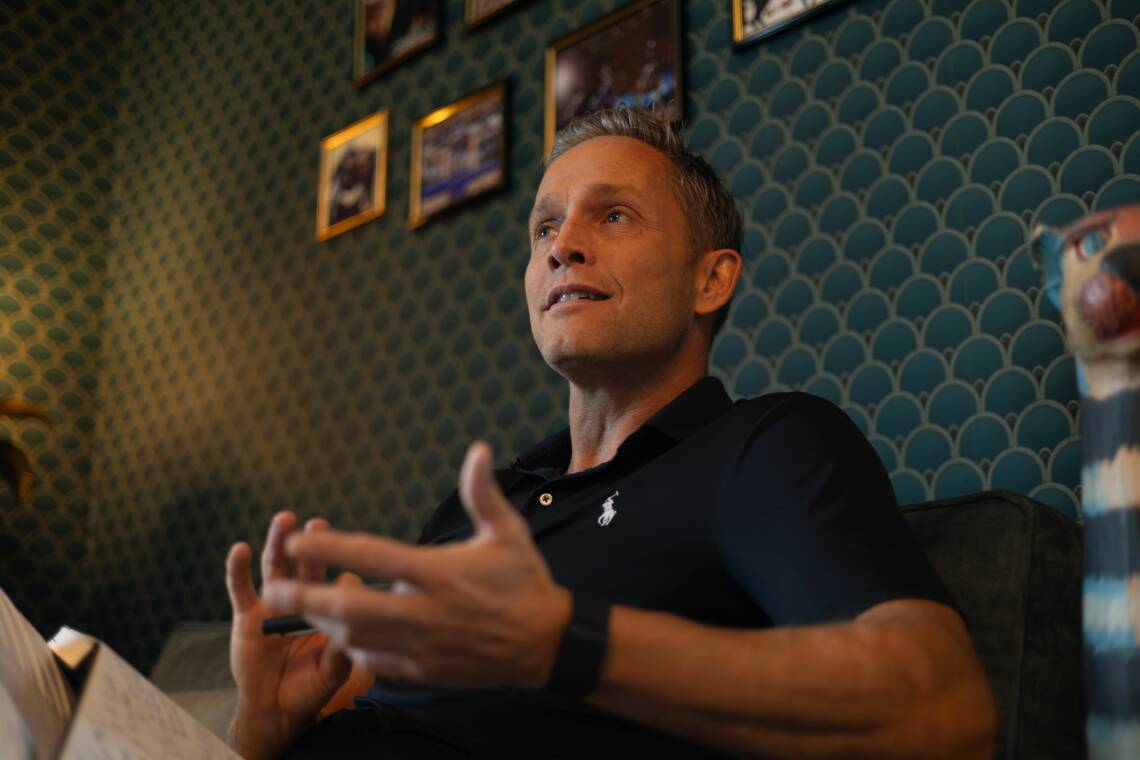
Mental training around the clock
It is important to emphasize that mental training occurs around the clock. It is not just the hours you spend in the stable.
"The exercise is telling myself I'll try to do something differently. There must be thinking and practicing repeatedly so that – through the conscious mind – it becomes ingrained in the subconscious mind as a new memory and, hopefully, a better automatic action."
When we need to make changes, there is a simple trick, according to Rasmus Bagger: "We don't start the new habit on Monday. We start it today and work on making it succeed daily. In the stable and the rest of our daily lives." It requires us, as riders, to become aware of what motivates us. What drives us?
"To have an ambition, we need constant motivation. Something that drives us to get better – and if we can add passion for what we do, we have an ideal combination of motivation and passion. Therefore, as riders, we must consider what brings us joy in riding," explains Rasmus Bagger.
In this way, we as riders ensure that we always have the goal in mind and know how to achieve that goal. Thus, consciousness is crucial when dealing with horses. We must be aware of our mental state when we arrive at the stable. Emotional intelligence requires us to take action over all those unconscious thoughts and try to make a fraction of them conscious.
"The horse shouldn't become our psychologist. It's fine that we experience being de-stressed after being in the stable – it's just not certain that the horse has the same perception if you've walked around in the stable for the first half-hour stressed and thinking about work or something at home."
By that time, the horse had registered the unrest. It has been noticed that this person cannot be present and take control of the situation and set the needed boundaries for the interaction – both on the ground and in the saddle. Rasmus Bagger emphasizes here that it is entirely normal. Usually, we contain many different emotions – both the beneficial and the undesirable – but we need to learn to become aware of them.
Calm riders create calm horses
Most equestrians will probably recognize the situation where the horse becomes restless or uneasy – but how we handle it as riders can change the entire situation. However, it requires us to consider our own mental state of mind.
"The rider needs to feel the security themselves. The rider needs to feel calm, self-confidence, courage, power, surplus, overview, and joy – this surplus mentality. When the horse becomes uneasy, we must be able to maintain that mentality and help it best out of its instinctual reaction as a flight animal," explains Rasmus Bagger.
But it requires an immense mental surplus and does not happen alone. It requires us to work diligently on ourselves – not only when in the stable. Rasmus Bagger explains how riding is one of the sports that places the highest demands on mental training. "It's the most important sport to be emotionally intelligent in."
Even though a lack of mental surplus can affect performance in other sports, for example, on the golf course, the golf ball is not affected by you hitting it into the ground. It might get a few scratches, but the horse, on the other hand, will instinctively panic if it senses you are getting angry or frustrated. That's not to say that, as riders, we should never experience or feel these emotions – we just need to be aware of them and try to work with them.
"Simply put, we can divide the brain into consciousness and subconsciousness. When you engage with something, it happens in your consciousness. It creates reflection and analysis. On the other hand, subconsciousness is the most powerful part of the brain that is never turned off. We have about 60,000 thoughts daily, and somewhere between 85-98 per cent of them are unconscious. This means that for some people, as little as 2% of their thoughts are conscious. We don't know what's going on the rest of the time. It's running on autopilot," explains Rasmus Bagger.
The human brain is a complex entity, but if we understand more about how it functions, it might become easier to understand why it is so difficult to change established patterns. "The subconscious part of the brain remembers and registers everything. This also means that EVERYTHING can affect our riding – and the subconscious can only offer solutions from the past. Consciousness, on the other hand, can evaluate, reflect, and prepare," explains Rasmus Bagger and continues:
"When we can't do anything other than what the subconscious offers, it's because we're not maintaining focus and being aware of doing something different. Stop, breathe, and reflect on a better solution than the automatic reaction."
Resisting automatic reactions is normal when the horse does not act how we want it to. Perhaps you have experienced that your horse reacts and becomes fearful or stressed about the same thing each time – and your reaction is the same every time. But if the result of the automatic reaction does not yield the desired response, it might be time to stop and try something different. Here, mental training and awareness can be the way forward. Hence, as a rider, you allow yourself to explore another solution than the one that your brain automatically offers you. By reflecting on your training, you may find a different and better resolution.
IN THE EVENING
In many ways, morning and evening are similar. Spend some time every evening writing down and reflecting on your day or time with the horse in your training diary.
Write down three things you were happy or grateful for.
It can be anything from a successful exercise to a situation where you managed to change your reaction consciously.

DURING THE DAY
Ensure that you look forward to going to the stable. In other words, associate it with positive feelings to be with your horse.
Focus on what you are doing. Even though you get to think about things in the stable during the day, it is not the time for that when you, for instance, are at work or doing something else. It creates a negative feeling in your body at work if you constantly think about what you must deal with in the stable – and vice versa.
Give yourself 5-10 minutes where it is okay for your thoughts to be directed towards the stable and what you have to do there – but then let it go so you can continue your work and what else requires your focus.
The exercise is simple: Be present in what you do, in this case, at your job.
AT THE STABLE
When you are on your way to the stable, you can use the travel time to shake off stress, bad moods, or other
non-resourceful emotions.
Take deep breaths and try to shift your focus to what is next.
Think about the things you can look forward to at the stable.
"Change your expectations for appreciation" – when you consciously look for things to appreciate, things around you change, and do not hold onto expectations that are not met. Shift your focus to what actually succeeds.


IN THE MORNING
Write down your ambitions for your riding. What kind of rider do you want to be?
Define clear goals and what it takes to achieve them.
Keep it focused on positive and resourceful associations.
Read your goals and dreams every morning and update them regularly.
Read them, do it, and practice it every day.

24 hour ROUTINE
How to ensure your mental well-being
with Horses:
Hours

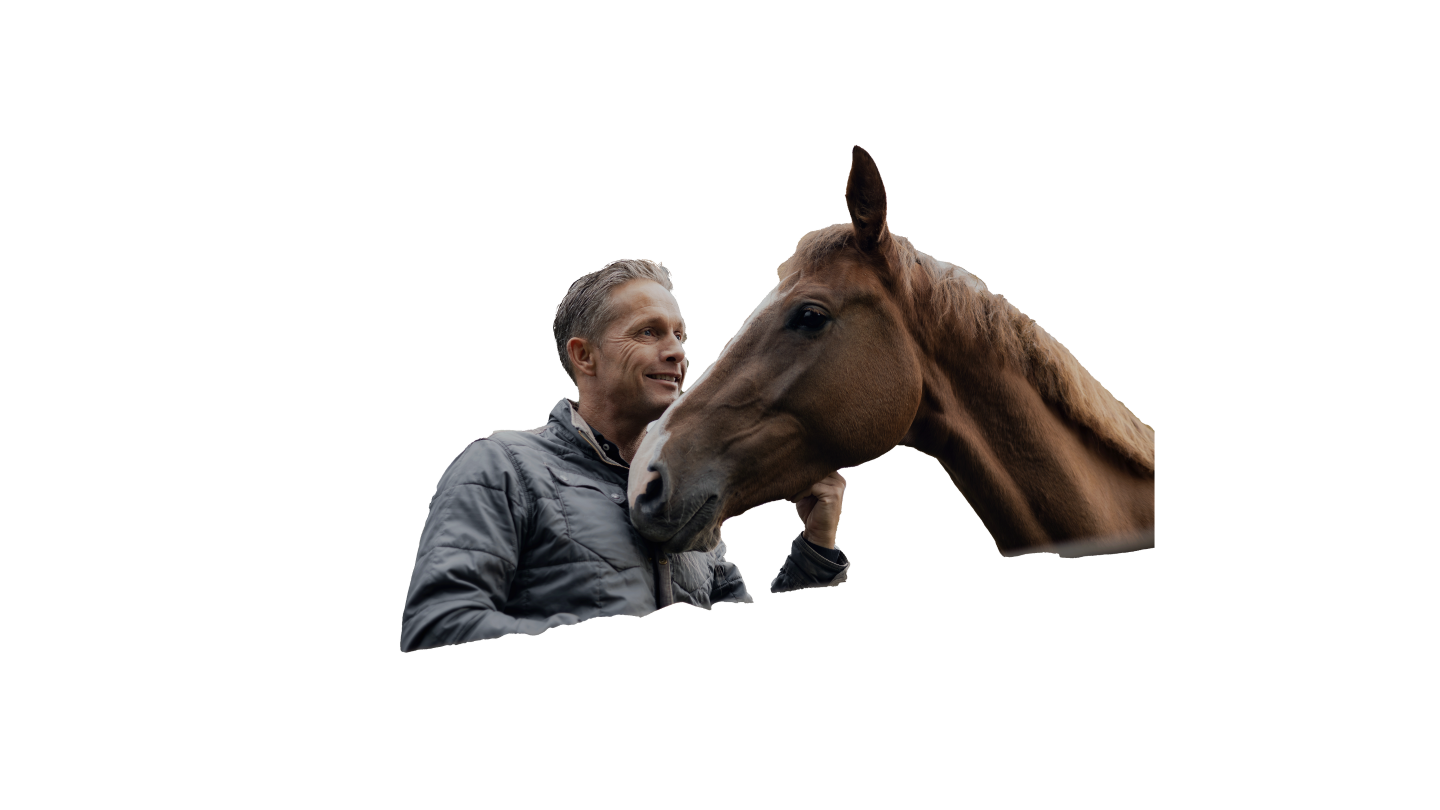
By Cæcilie Kallehave Jensen
Photos: Malgré Tout // Trine Bjørn Puggaard
"I have been working with Rasmus for many years, and he is a huge part of my success so far. The tools he can provide to help manage 'stressful' situations allow you to focus on the right thoughts. I am thrilled with our collaboration and recommend it to all athletes."
Rikke Belinda Barker
International show jumper

Joy, calm, overview, relaxation
Resourceful feelings:

As riders, horses occupy a significant portion of our daily lives. There is a lot of planning, coordination, and dealing with joys and concerns. But how do we care for ourselves as horse owners, and how does our mental well-being affect the horse? We have discussed this with Rasmus Bagger.
Stress, pressure, fear, anger, helplessness, anxiety
Non-resourceful feelings:

"Good mood equals good riding. Bad mood equals bad riding."
According to mental trainer Rasmus Bagger, that is how simple it can be when he is asked how our mental state and mood impact our horses. "It's normal to be in a bad mood, but we need to understand that it's not useful at all when working with horses," explains Rasmus Bagger.
Our horses will notice it when we enter the stable stressed, angry, or similar emotions – and, of course, they also notice the opposite. Those are the tools the horse has to work with. It senses moods, registers body language, and responds immediately to what it detects.
It requires us to become aware of what we think and feel – and what we bring into the stable and when we mount in the saddle. "Every time we emit these anxious, worried, stressed feelings, we show the horse that it can't trust us."
"That's why, as riders, we also need to take our own mental well-being seriously," says Rasmus Bagger. Labelling feelings as negative or positive is inaccurate, but Rasmus Bagger categorizes our emotions as resourceful and non-resourceful rather than negative and positive.
"When we have non-resourceful feelings, we tell the horse we're unreliable. Therefore, the horse will try to take control and do undesirable things, even though we've asked the horse to do them because we haven't taken control of our emotions and we send inappropriate signals to our horses," explains Rasmus Bagger. Our horses are herd animals – but also flight animals. It means they depend deeply on being able to trust us as riders. We take responsibility and show the horse it can trust us – and they can only do that if we are balanced and present – so we can establish a safe partnership.
It simply does not work if we start thinking about a conflict at home or work while expecting top results in the saddle – and this applies whether you are a competitive rider, trail rider, do groundwork, or something entirely different. Presence is the key to all horse training, explains Rasmus Bagger.
But how do we train that presence? Get Rasmus Bagger's best tips for training your presence – around the clock – in this article.
